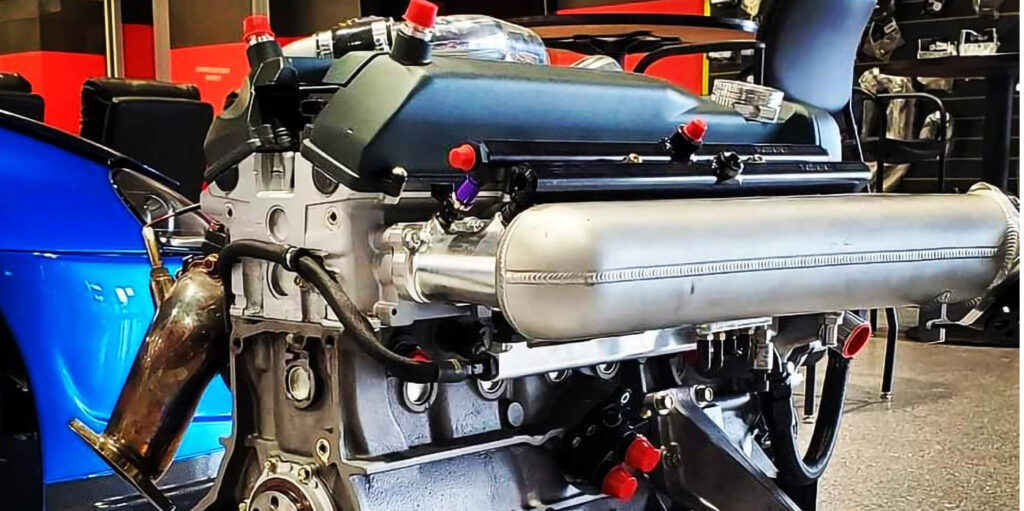The RB engine platform has been around since the mid-‘80s (1985) and ended production in 2004 as a global platform. With new markets opening in the western United States, the RB engine is hot on the scene again. The legal import of Nissan Skyline GTRs is a huge business as well, now that anyone wanting a piece of Japanese muscle can have their slice of JDM fandom.
RB engines have been a holy grail of sorts for a huge cult of owners, followers and fans alike. Nissan raced the RB engines in a multitude of classes from works teams to private teams competing for the top spot in the racing world. RB engines were so potent that the Skyline GTRs were dominating the circuits.
With all the winning and global interest, the RB platform saw an incredible amount of growth in aftermarket support and OE performance applications. Nissan produced one of the biggest icons ever to hit the racing scene!
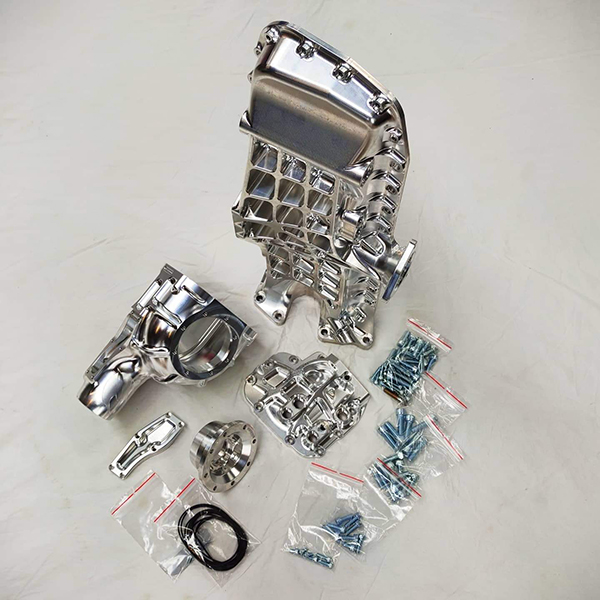
My shop, Engineered Performance, is a Nissan race engine machine shop specializing in RB and VG engines. We are widely known for the VG platform, but since the Skylines (R32 and 33) are legal for import now, we have been incredibly busy doing a lot of RB engine work. Many of our RB engine builds go in street cars, but we do have a few that actively road race their GTR for some spirited driving. With this new platform hitting the United States, the cars are getting setup/built for more street/strip-type driving as well.
In this article, I want to discuss some of the things to look for when you are having your RB engine machined and/or built. It is important not to skimp on buying quality manufactured parts. There are a lot of companies out there that can supply you with what you may need or are looking for, but I urge you to consult with your engine builder or machinist before opening your wallet. I cannot suggest this enough.
It’s widely known that oiling is a huge issue with the RB platform. Every platform has its own quirks or pitfalls, but the RB really has an oiling issue with oil recovery and oil supply. Supply issues for the majority are remedied with a wide selection of wet sump oil pumps. Manufacturers such as Tomei, HKS and many others offer their own versions of an upgraded oil pump. The oil pump drive on the RB crankshafts for some suffer from a short drive section, which caused massive issues with the oil pumps.
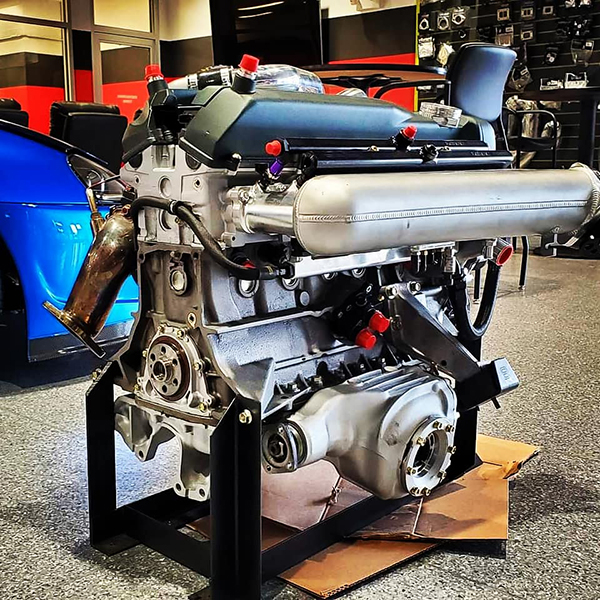
Cracked gears, stripped oil pumps, etc., were happening as well, so a design change was made for a longer drive section. This worked well, but as aftermarket support and racing pushed the platform further, the RB suffered even more under higher loads and sustained racing. A solution was made that mimics Toyota’s 2JZ in the way of a spline drive. A good machine shop should be able to install this product onto your short or long-drive RB crank. If you are wanting to make a fair amount of horsepower and torque, it is a must have.
We install quite a few spline drive kits for clients, and it is a mandatory upgrade for anyone who commissions us to build them an RB, especially if they are maintaining a wet sump setup. Also, do not forget to get your cast pan updated with a new and larger sump for added oil capacity and supply. You have a wide selection to choose from, Garage 101, Greddy and many others are available, and are a requirement if you jump up to an upgraded oil pump.
The larger pumps flow more, which means they also scavenge more, so the risk of drying up the factory pan is a real problem. The rule of thumb is a new, upgraded oil pump needs a larger oil sump as well. And don’t forget to make sure you have your machinist or engine builder port the oil pump too. Just because it is an upgraded oil pump does not mean it is at its full potential, so be sure to have the pump reworked some.
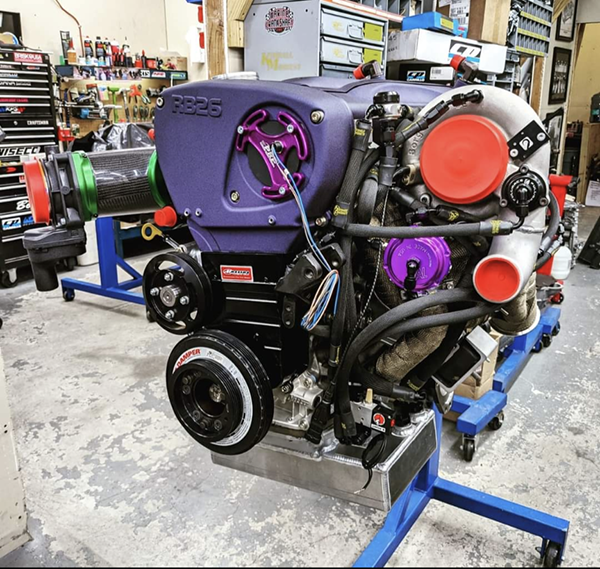
With a long 7 main journal setup, the crankshaft has its challenges in keeping itself housed in the block. With an AWD system tugging at the engine all the time, the block begins to feel some of the stress. A workable solution is a billet main cap kit. We install this standard on all engines that are geared to make over 550whp. The longer the crank the easier it is to flex and move. The factory cast iron girdle is extremely weak and the only way to fixture the crankshaft correctly is to put a billet main cap kit on the block. The cap kit also includes a block brace. This ties both the main cap system as well as the pan rails together to make the block much more ridged and secure. We also upgrade the main studs from an M10 stud to an M12. This is a significant upgrade and we have assemblies making well into the 4-digit power range using this setup.
Billet cranks are a great idea if you are planning to push some serious power. Callies makes a top-tier billet crank offering that is the best around from our perspective. A full counterweight crankshaft with aero shed processing and straight shot oiling is available in both lightweight and heavy-weight counterweight setups. Stroker options are available too. We’ve used some lightweight, full counterweight versions and they fit the bill every time.
Another thing to consider is going to a dry sump setup if you are really planning to make north of 800whp. The best kit we have come across is the Kiwi CNC billet dry sump pan and modular front differential. Yes, you can keep the AWD and yes, it is a little pricey, but this product offering covers a lot and looks good while doing it. A modular front differential makes installation much easier too. We rebuild a lot of RB front differentials and while we developed custom fixtures to handle this sort of job, doing the job on an isolated differential makes this a lot easier to manage, so consider a dry sump if you are really looking to push the boundaries.
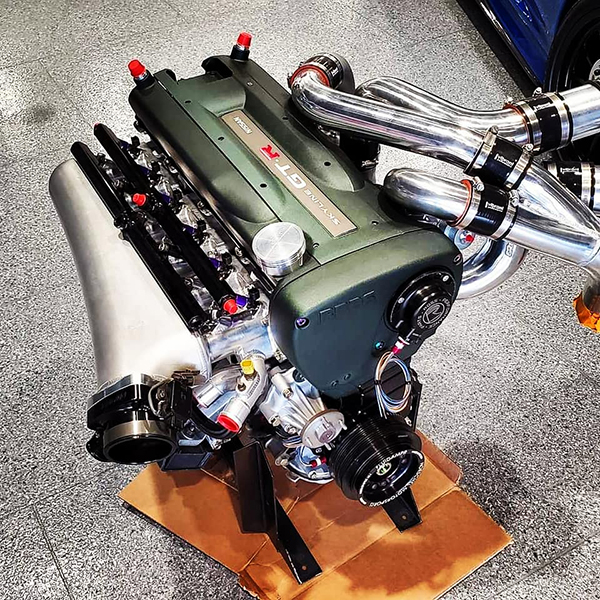
Focusing a bit on some of the things we do for the RB, a few details we like to make sure are done is full plug removal on the block. There are quite a few oil plugs on the RB block and head, so getting these removed and converted to using a pipe plug is important. This step not only allows you to clean the oil galley out, but it makes it a serviceable area of the engine. This detail shows the clients that we did our job to be sure all areas of the block and head were cleaned internally. We do this with the crankshafts as well. Removing all intersecting hole press-in plugs on the crank ensures the crankshaft is put back into service completely free of old oil and debris hidden inside.
Torque plate honing is also a must and should always be utilized when your RB block is getting the bores resized for new pistons. Bores can distort over .0015”-.002” with a torque plate fitted, so it is crucial to have this item fixtured to your block to simulate the stresses to ensure the bores are honed as straight as possible. Failure to do so will result in poor ring seal, blow by, decreased compression and oil consumption.
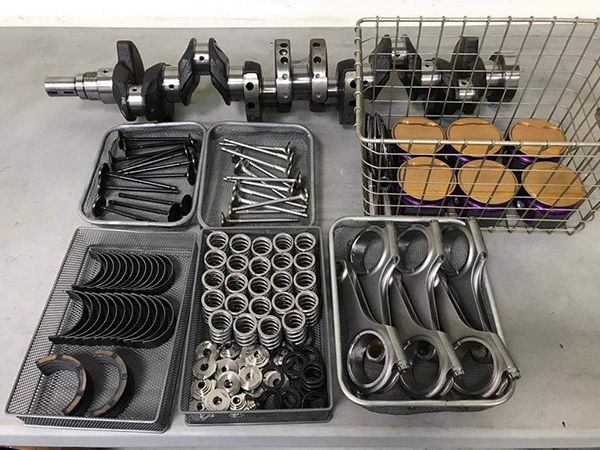
We use a lot of cryo treatment on our engines as well. We only trust Controlled Thermal Processing for all our cryo needs. We do this simply because cryogenics on race engine parts is proven to increase both durability and longevity on engine parts, and an unlimited array of parts outside of the engine too. If you are looking to put a serious insurance policy on your parts, cryo treatment should be a no brainer. We process as much as we can, but our standard is cryo treating rotating assembly parts at a minimum. We find that our coatings perform better on the bearings and pistons because of it. Our crankshafts produce less harmonics under dynamic conditions and the rods and rod bolts get a much longer shelf life than without this process. Bottom line, if you are looking to safeguard your investment, cryo treatment should be an integral part of your build plan.
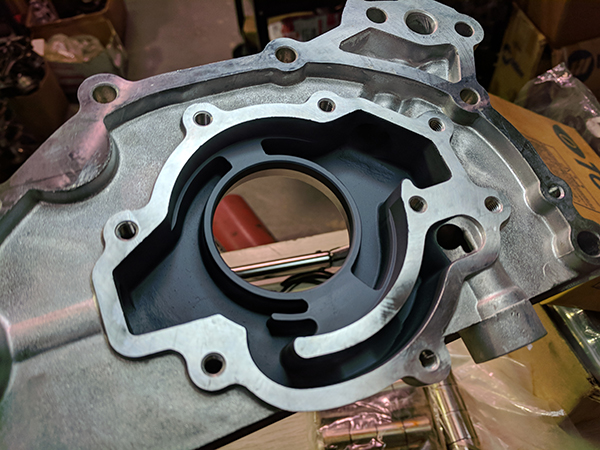
There is so much we could discuss when it comes to the RB platform, but I don’t want to take away from what could be discussed with your own engine builder or customer. Every build is going to be different and the needs, wants and goals will change as well. Take the time to talk with your machine shop, engine builder and engine calibrator to ensure you are buying the best you can buy for your application. I cannot stress this enough to customers. As an engine builder and machinist, I will only suggest what I am comfortable using and doing for someone’s project. We are happy with any direction our clients take their cars, we just want to ensure we build them to withstand the rigors they intend to put them through and survive. EB

